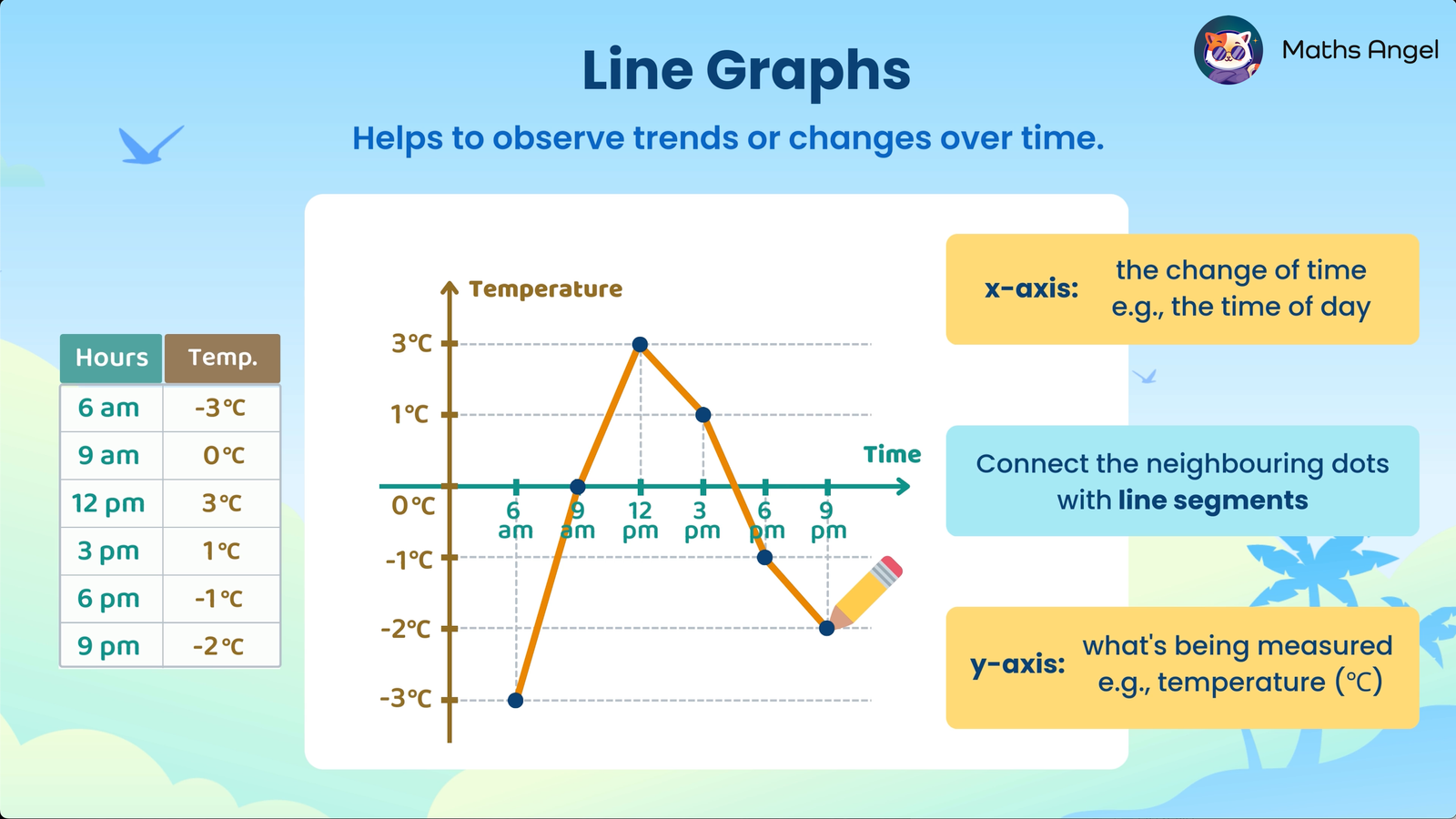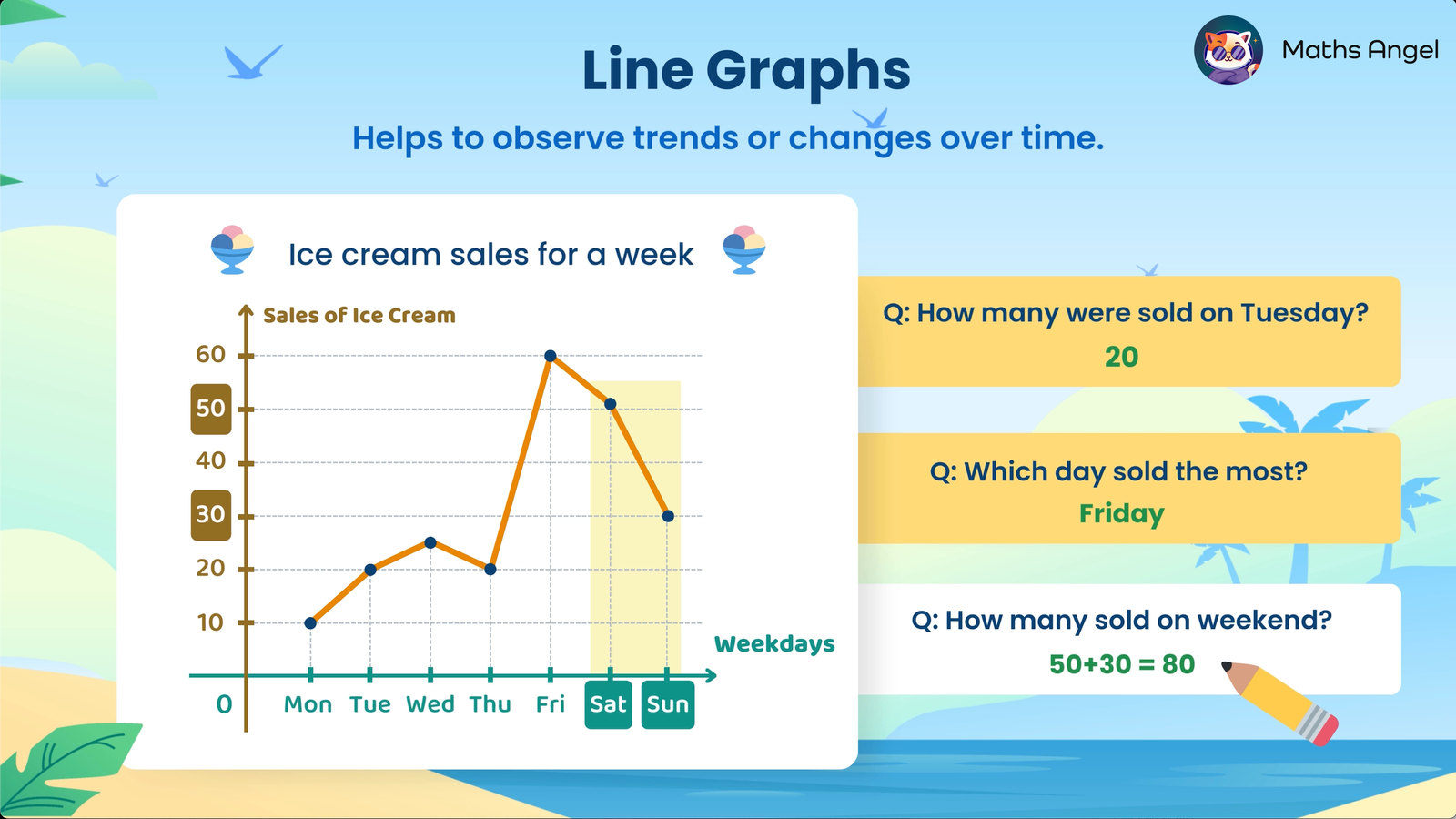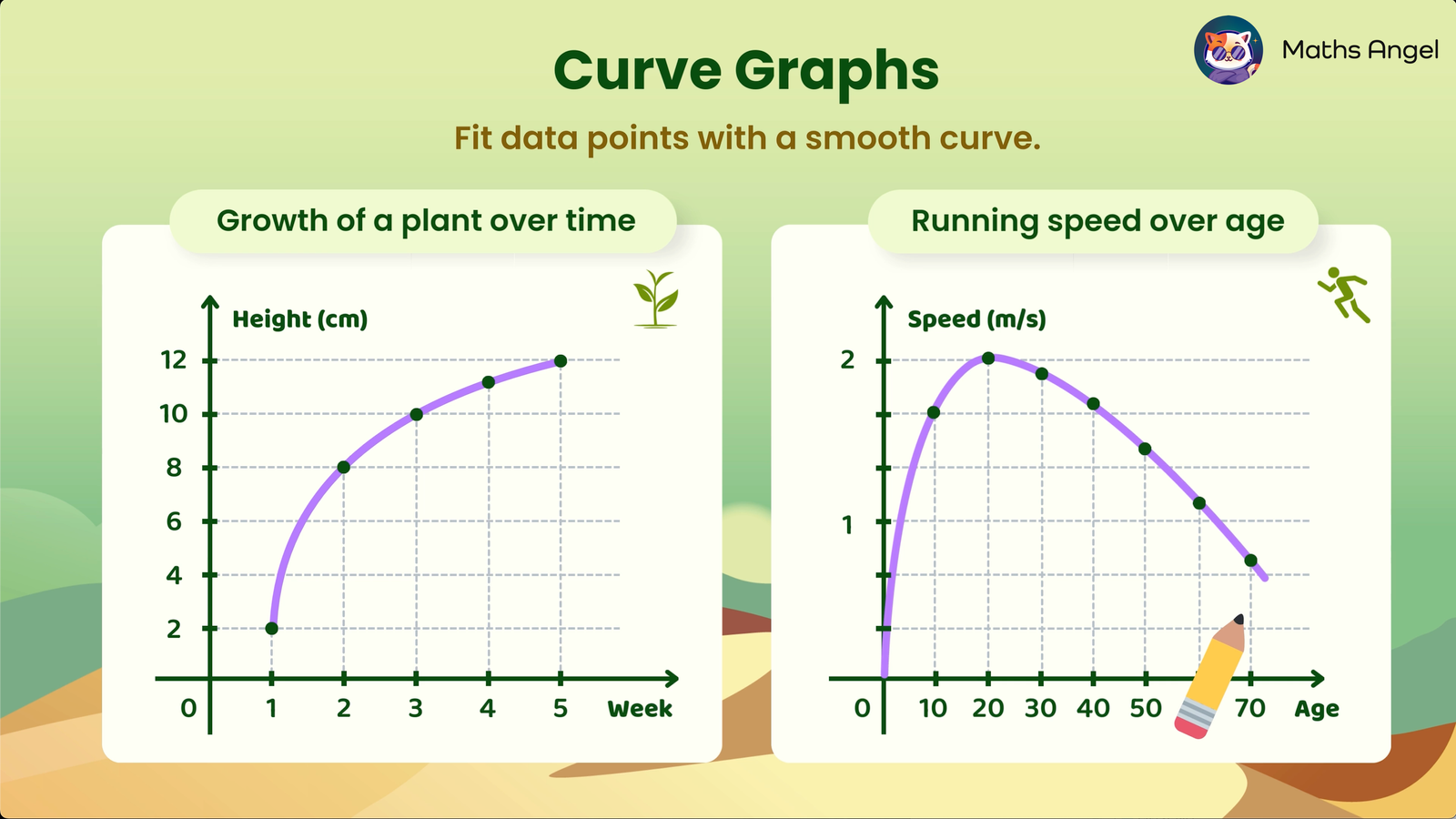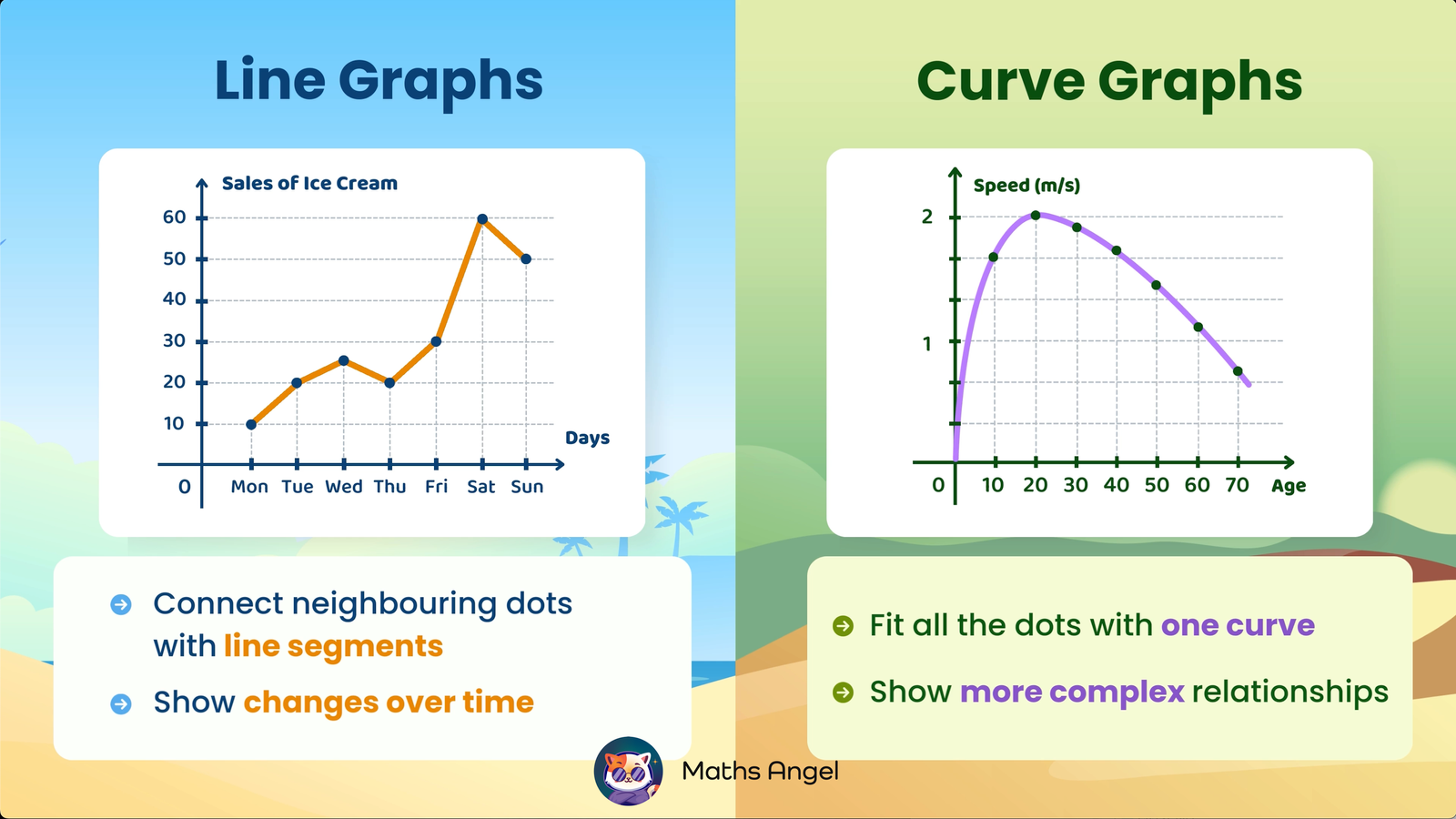Line Graphs and Curve Graphs
🎬 Math Angel Video: Line Graph vs Curve Graph
What is a Line Graph? (0:01)
A line graph is a way to display data points over time by connecting them with line segments, making it easy to visualize trends and changes.
🌟 Key Features of Line Graphs:
- X-axis: Represents the independent variable, usually time (e.g., time of day).
- Y-axis: Represents the dependent variable, showing what is being measured (e.g., temperature in °C).
- Data Points: Each point marks a recorded value at a specific time.
🌟 Example of a Line Graph:
This line graph tracks temperature changes throughout the day:
- At 6 am, the temperature was -3°C.
- At 12 pm, it peaked at 3°C.
- At 9 pm, it dropped to -2°C.
🌟 Why Are Line Graphs Useful?
Line graphs clearly show how values change over time, making them useful for analyzing trends and making predictions (e.g., temperature, stock prices, population growth).
What is a Curve Graph? (2:12)
A curve graph is a type of graph used to display data points that follow a continuous trend, forming a smooth curve instead of straight line segments.
These graphs help visualize patterns of change over time when data does not increase or decrease at a constant rate.
🌟 Key Features of Curve Graphs:
- Smooth Curves: Unlike line graphs, which connect points with straight lines, a curve graph fits a smooth curve through the data points.
- Non-Linear Relationships: Best used when changes happen at different speeds instead of a constant rate.
🌟 Examples of Curve Graphs:
- 🌱 Growth of a Plant Over Time
- The height of a plant increases but at a decreasing rate.
- Growth is initially rapid but slows down as the plant matures.
- A curve graph accurately represents this gradual change.
🏃♂️ Running Speed Over Age
- A person’s running speed improves as they grow, peaks at a certain age, and then declines.
- The data follows a curved pattern, making a curve graph the best way to visualize this trend.
🌟 Why Are Curve Graphs Useful?
Curve graphs are widely used in science, economics, and real life to show gradual changes over time.
Comparison: Line Graphs vs. Curve Graphs (2:50)
Both line graphs and curve graphs are used to show trends and changes over time, but they differ in how they connect data points and represent relationships.
- Line Graphs
- Connect data points with straight line segments.
- Best for showing steady or consistent trends over time.
- Curve Graphs
- Fit a smooth curve through data points instead of using straight lines.
- Best for representing more complex relationships where changes do not happen at a constant rate.
📂 Flashcards: How to Draw and Read Line Graphs




🍪 Quiz: Test Your Skills with Line and Curve Graphs
Membership Required
You must be a member of Math Angel Plus or Math Angel Unlimited to view this content.
🎩 Struggling with Graphs? Try AI Math Solver
Need math help? Chat with our AI Math Solver at the bottom right — available 24/7 for instant answers.
